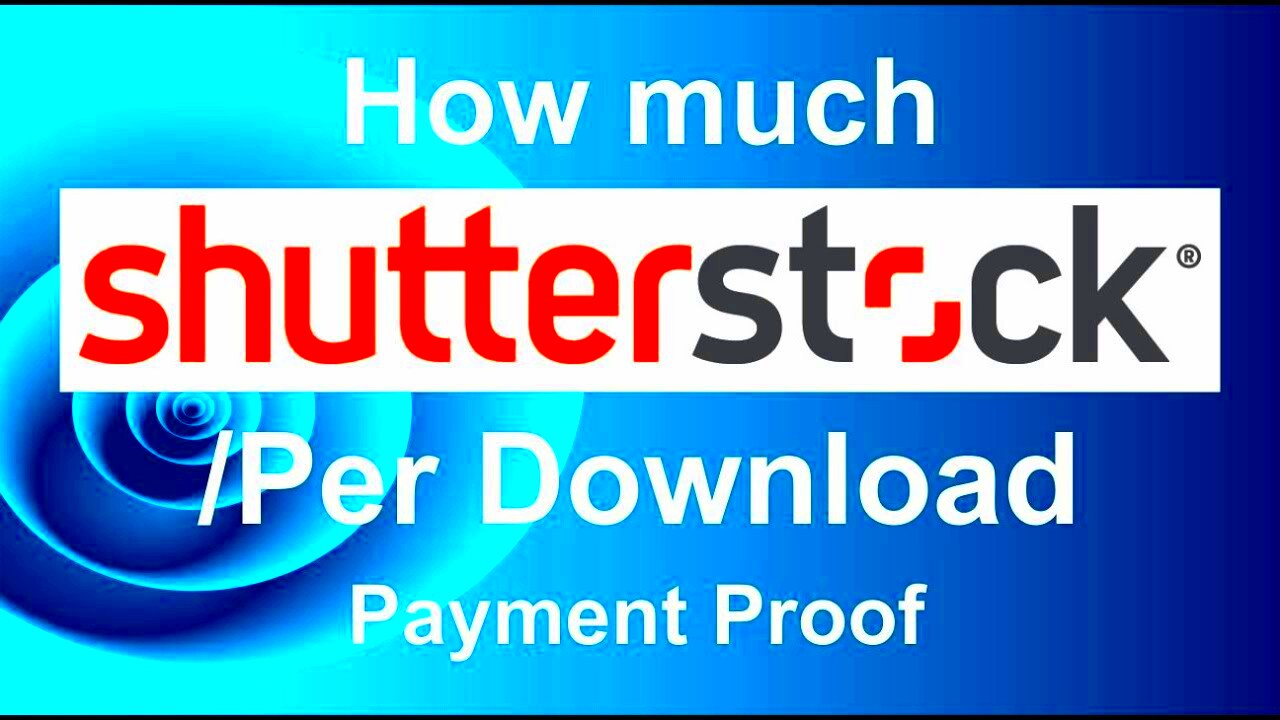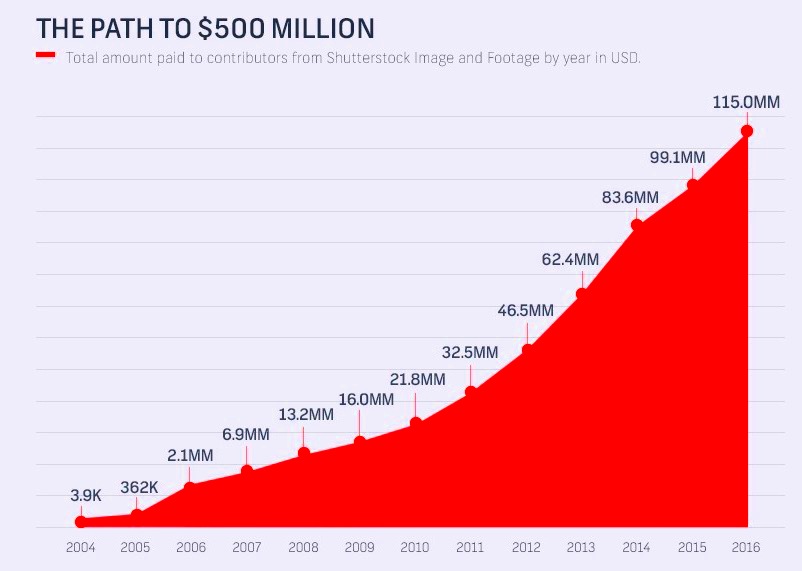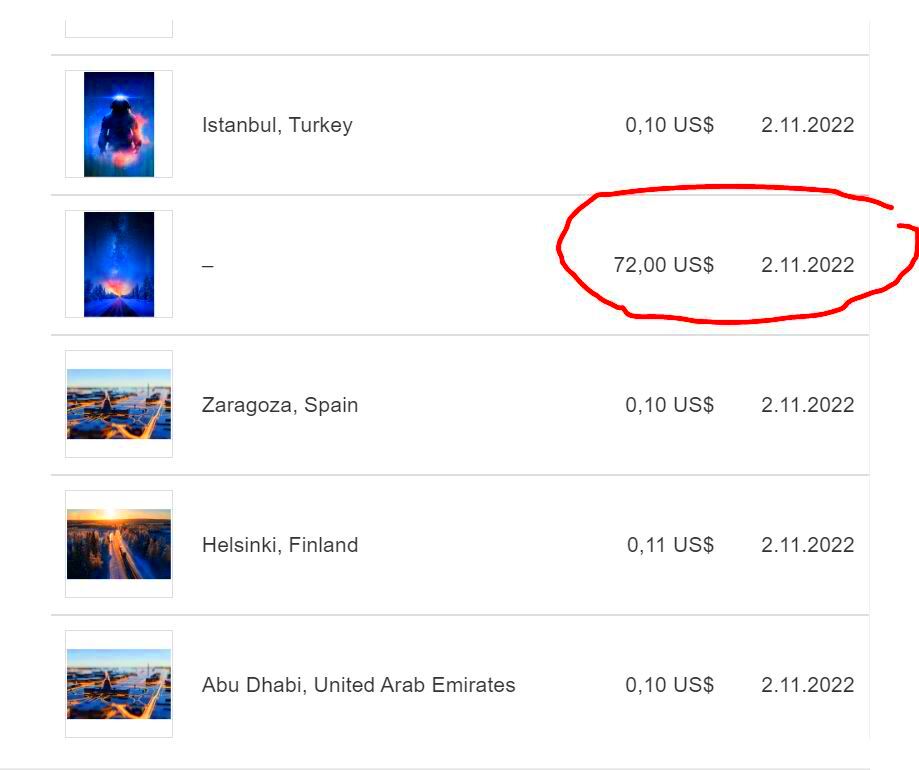At first,
Shutterstock's payment setup may appear a bit intricate but once you familiarize yourself with it, you'll find it quite simple. They use a system where customers buy credits to access images. As a contributor you receive a portion of these credits whenever your photos are downloaded.The amount you get paid is influenced by factors like the kind of license standard or enhanced and whether the image is exclusive or not.
Shutterstock gives a portion of the revenue generated from each download to the contributor. This portion can differ depending on the contributors earnings level and the subscription plan chosen by the customer.I want to tell you a story. When I began working with
Shutterstock I was taken aback by their payment system. My initial sales were on the side but as I uploaded more top notch images and grasped the intricacies of the platform my income gradually increased. The crucial factor was grasping the various licensing methods for images and their effect on payments.
Factors Influencing Payment Rates

When it comes to figuring out your earnings for photos on
Shutterstock there are several factors at play. Lets take a closer look at them.
- License Type: The license type affects the payment rate. Standard licenses typically yield lower payments compared to enhanced licenses, which are used for high-profile or commercial purposes.
- Contributor Level: Shutterstock has different contributor levels based on the number of downloads and sales. Higher levels receive a larger percentage of the revenue.
- Image Quality and Popularity: High-quality, popular images are more likely to be downloaded. Investing in quality pays off in the long run.
- Exclusivity: Exclusive images often earn more per download than non-exclusive ones, as they are only available on Shutterstock.
From what I've seen putting an emphasis on creating distinctive and top notch visuals really boosted my income. I recall that when I began including more specialized images in my collection the surge in downloads was quite evident.
How Payment Rates Vary by Photo Type

The compensation rates for images on
Shutterstock can differ based on the category of the photo and its intended usage. Here’s an overview of the factors that influence payment rates.
- Stock Photos: Generally, stock photos are priced based on their license type. Standard licenses offer lower payouts, while enhanced licenses provide higher returns.
- Editorial Images: These images, used for news or editorial purposes, often have different payment structures and can sometimes command higher fees due to their specificity.
- Videos: Shutterstock also offers video content, and payment rates for videos can be different from those for photos. Videos typically earn more due to their complexity and higher demand.
I remember when I started providing more pictures. The pay rates were quite distinct and it opened my eyes to how different kinds of content are valued in different ways.
Payment Rates for Exclusive vs. Non-Exclusive Photos

When it comes to selling your pictures on Shutterstock deciding between being exclusive or non exclusive can greatly affect how much money you make. Exclusive photos are ones that you only sell through Shutterstock. Non exclusive photos on the hand can be sold on different platforms too.
Exclusive Photos: Shutterstock pays more for exclusive photos because they’re committed to offering something unique to their customers. This exclusivity often results in higher visibility and better placement in search results. Here’s a quick rundown of why exclusivity can be more rewarding:
- Higher Payouts: Exclusive photos typically earn a higher percentage of the sale price. This can significantly boost your earnings over time.
- Better Visibility: Exclusive images often receive better placement in Shutterstock’s search results, increasing their chances of being downloaded.
Non-Exclusive Photos: While you might not get as high a percentage per download, selling non-exclusive photos on multiple platforms can increase your overall income. Here’s why:
- Broader Reach: By listing your photos on various sites, you increase their exposure to potential buyers.
- Flexibility: Non-exclusive photos give you the freedom to experiment with different platforms and see where your work performs best.
Based on what I have seen finding a balance between submitting content exclusively and non exclusively has been beneficial for me. Exclusive submissions tend to yield higher earnings per download while non exclusive ones allow me to explore different sources of income.
How to Maximize Your Earnings on Shutterstock
To boost your income on Shutterstock it takes more than simply sharing images. It requires careful planning maintaining high standards and having a grasp of the market. Here are a few insights drawn from my personal experience.
- Focus on Quality: High-resolution, well-composed images are more likely to be downloaded. Invest time in producing the best possible content.
- Research Trends: Stay updated with current trends and popular themes. Images that align with current events or popular topics tend to perform better.
- Optimize Keywords: Use relevant and specific keywords to help your photos appear in search results. Think about what buyers might type when looking for images like yours.
- Upload Regularly: Consistent uploads keep your portfolio fresh and relevant. The more images you have, the higher the chances of making sales.
- Engage with the Community: Participate in Shutterstock’s forums or social media groups. Networking with other contributors can provide valuable insights and boost your visibility.
As I began putting these tactics into action I saw a slow yet consistent growth in my income. Its really about discovering what suits you and staying committed to it.
Common Misconceptions About Shutterstock Payments
There are a few misunderstandings regarding Shutterstock payments that can cause confusion. Lets clarify some of the most prevalent ones:
- Misconception 1: “You have to sell a lot of images to make a decent income.” While selling more images can help, focusing on quality and trends can lead to better returns even with fewer uploads.
- Misconception 2: “Exclusivity guarantees higher earnings.” Exclusivity can increase earnings per download, but it doesn’t guarantee higher total income. It’s essential to balance exclusivity with other strategies.
- Misconception 3: “You need professional equipment to succeed.” While high-quality equipment can help, many successful contributors use mid-range cameras and smartphones effectively.
- Misconception 4: “Shutterstock doesn’t pay well.” Payments can vary, but many contributors find Shutterstock to be a reliable source of income, especially with a well-maintained portfolio.
Through my personal journey debunking these misconceptions and grasping the true workings of Shutterstock payments has empowered me to navigate the platform with greater efficiency. Stay receptive to new ideas and be willing to adapt your approaches as you gain insights.
Real Stories from Shutterstock Contributors
Listening to the experiences of actual contributors can be truly motivating and enlightening. Numerous accomplished Shutterstock contributors have distinct paths that showcase their hurdles and victories. Allow me to recount some tales that could strike a chord with you.
Story 1: Rina Sharma, a photographer from Mumbai, started her Shutterstock journey as a hobby. Initially, her sales were slow, but she was persistent. She began to focus on niche topics like traditional USAn festivals and street food. Her dedication paid off as her images started gaining traction. Today, Rina has a thriving portfolio and often receives commissions for custom work based on her Shutterstock success.
Story 2: Arjun Patel, a graphic designer from Ahmedabad, began contributing to Shutterstock to supplement his income. He shared that the key to his success was understanding the market and adapting his designs to current trends. Arjun’s income from Shutterstock now provides him with financial stability and the freedom to work on personal projects he loves.These tales serve as a reminder that achieving success on Shutterstock isn’t an instant process. It demands inventiveness, perseverance and a grasp of how the platform works. Every contributors journey is distinct and drawing insights from the experiences of others can assist you in charting your course.
Tips for New Contributors on Shutterstock
Starting out on Shutterstock can be an exhilarating yet daunting experience. Here are some helpful suggestions to assist you in embarking on your path and making the most of your opportunities.
- Start with Quality Content: Focus on creating high-resolution, well-composed images. Quality matters, and it's often the deciding factor for buyers.
- Understand Market Trends: Keep an eye on trending topics and popular themes. Aligning your work with these trends can improve your chances of making sales.
- Use Effective Keywords: Properly tagging your photos with relevant keywords helps in better search visibility. Think about what potential buyers might search for and include those terms.
- Build a Diverse Portfolio: A varied portfolio showcasing different styles and subjects can attract a broader audience. Experiment with various types of content to see what works best.
- Engage with the Community: Join Shutterstock forums and social media groups. Engaging with other contributors can provide valuable insights and support.
When I first began my journey I discovered these tactics to be immensely valuable. They assisted me in navigating the early stages of learning and building my presence on the platform. Keep in mind that perseverance and ongoing progress are essential.
FAQ
Q: How often should I upload new photos to Shutterstock?
Uploading consistently can be advantageous. Try to share content regularly, even if it’s only a handful of pictures each month. This helps maintain an active portfolio and boosts your chances of making sales.
Q: Can I sell the same photo on other platforms if it’s on Shutterstock?
If you have a non exclusive photo you can sell it on different platforms. But if you choose to make it exclusive to Shutterstock you cant sell it anywhere else.
Q: What are the best types of images to upload?
A: Images that are of quality and align with current trends usually do get good results. Consider the potential needs of buyers like showcasing ideas, capturing moments or incorporating seasonal elements.
Q: How do I know which keywords to use?
A: Explore trending keywords that are relevant to your visuals. Check out comparable images that have performed well and take note of the keywords they employ. This insight can give you an idea of what potential customers are looking for.
Q: How long does it take to start earning money?
The amount you earn can depend on the caliber and volume of your photos, along with your marketing efforts. Some contributors begin to see outcomes in just a few weeks, while it might take more time for others.These frequently asked questions address issues that new contributors often face. By grasping the fundamentals and adhering to these suggestions you can pave your way towards achieving success.
Conclusion
Starting a journey with Shutterstock can bring both excitement and challenges. There are various factors to navigate such as grasping the payment system exploring photo options and maximizing your income potential. One key takeaway from my experience is the significance of being persistent maintaining quality and thinking strategically.Each contributor has a journey and discovering what suits you best may require time and trial. Stay involved with the community continually enhance your portfolio and remain receptive to learning from others. With commitment and perseverance the benefits of contributing to Shutterstock can be rewarding and satisfying.
 When it comes to figuring out your earnings for photos on Shutterstock there are several factors at play. Lets take a closer look at them.
When it comes to figuring out your earnings for photos on Shutterstock there are several factors at play. Lets take a closer look at them. The compensation rates for images on Shutterstock can differ based on the category of the photo and its intended usage. Here’s an overview of the factors that influence payment rates.
The compensation rates for images on Shutterstock can differ based on the category of the photo and its intended usage. Here’s an overview of the factors that influence payment rates. When it comes to selling your pictures on Shutterstock deciding between being exclusive or non exclusive can greatly affect how much money you make. Exclusive photos are ones that you only sell through Shutterstock. Non exclusive photos on the hand can be sold on different platforms too.Exclusive Photos: Shutterstock pays more for exclusive photos because they’re committed to offering something unique to their customers. This exclusivity often results in higher visibility and better placement in search results. Here’s a quick rundown of why exclusivity can be more rewarding:
When it comes to selling your pictures on Shutterstock deciding between being exclusive or non exclusive can greatly affect how much money you make. Exclusive photos are ones that you only sell through Shutterstock. Non exclusive photos on the hand can be sold on different platforms too.Exclusive Photos: Shutterstock pays more for exclusive photos because they’re committed to offering something unique to their customers. This exclusivity often results in higher visibility and better placement in search results. Here’s a quick rundown of why exclusivity can be more rewarding:
 admin
admin








